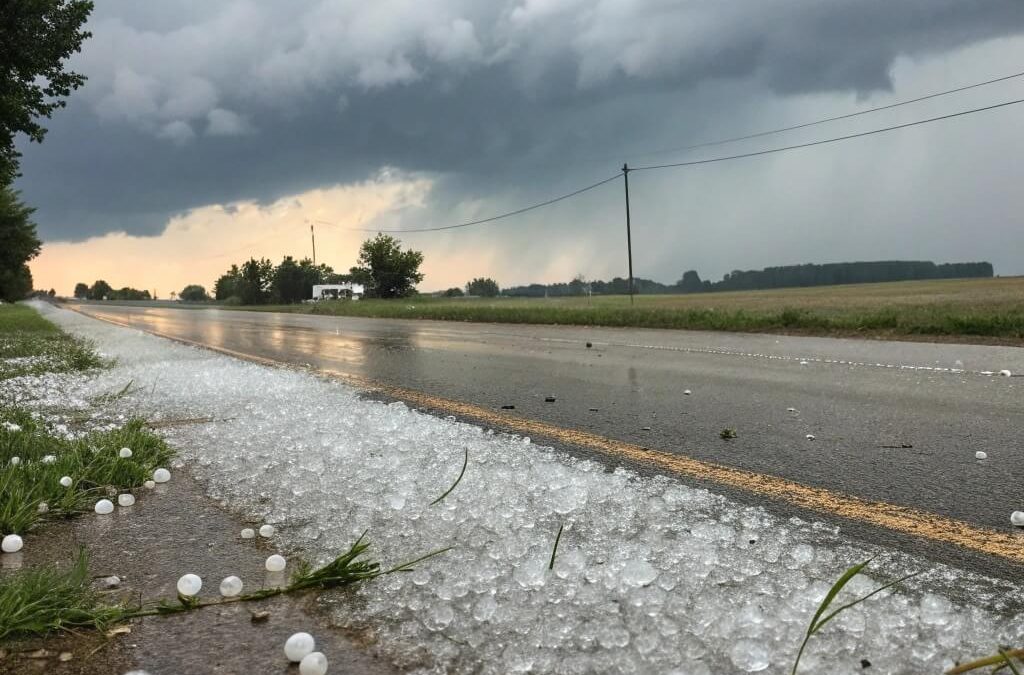Using Historical Weather Data to Challenge Fraudulent Insurance Claims
I have seen this firsthand, dealing with hail claims over the years. When severe weather strikes, fraudulent insurance claims often spike. As a forensic meteorologist with over 27 years of experience in meteorology, I’ve seen and proven how detailed weather data can uncover and challenge fraudulent claims. Whether you’re an insurance adjuster or a legal professional handling cases with a weather element, understanding how to use historical weather data effectively can save millions in unwarranted settlements.
How Historical Weather Data Exposes Fraud
Fraudulent claims typically involve exaggerated or completely fabricated weather conditions. By carefully analyzing historical weather data, we can pinpoint exactly what conditions were present, often disproving claims of severe weather damage.
Real-World Example: The “Imaginary Hailstorm”
In a recent case, a homeowner filed a substantial insurance claim alleging extensive hail damage. Using precise historical weather records, I determined that not only had no hailstorm occurred on the claimed date, but conditions were wet without lightning and storms. This evidence was critical in saving the insurance company over $100,000.
Key Data Sources for Accurate Weather Information
To effectively challenge fraudulent claims, it’s essential to use authoritative and reliable data sources:
- NOAA’s National Climatic Data Center (NCDC): Provides verified, official weather data.
- Local Doppler Radar Archives: Offers precise storm tracking capabilities.
- Historical Satellite Imagery: Useful for confirming cloud cover and storm presence.
Geo-Targeted Analysis for Regional Accuracy
Weather patterns vary significantly by region. Analyzing weather data with a local focus ensures highly accurate assessments. For example:
- Memphis, TN: Frequent thunderstorms and hail, and scrutiny is needed for hail claims.
- Gulf Coast States: Frequent hurricane claims require precise tracking and verification.
Questions Often Asked
Here are just a couple of questions insurance professionals ask
- “How do I verify insurance claims with weather data?”
- “Can historical weather data dispute fraudulent storm damage claims?”
Common Myths About Weather-Related Insurance Claims
- Myth: All storm damage is covered regardless of verification.
- Reality: Insurers always validate claims against historical weather records.
- Myth: Weather data is too broad to dispute specific claims.
- Reality: Modern data analysis precisely identifies weather conditions at specific addresses and exact times.
Frequently Asked Questions (FAQ)
Can historical weather data be used in court?
Yes. Historical weather data, especially when verified by a certified forensic meteorologist, is admissible and persuasive evidence.
How quickly can historical weather data be obtained?
Typically, accurate weather data can be retrieved and analyzed within 24 to 48 hours. A weather expert can be invaluable in cases like this. They provide an array of SERVICES.
Who can certify weather data for legal use?
AMS certified forensic meteorologists with professional credentials (AMS, NWA, and even the EPA) can provide authoritative certification.
Final Thoughts
Accurately challenging fraudulent weather-related insurance claims saves companies substantial amounts and ensures justice. Leveraging historical weather data, enhanced by modern AI technology and verified through professional expertise, is vital in today’s complex litigation environment. Be careful using AI for litigation. It’s not ready for prime time in litigation yet, in my opinion.
For more insights or assistance in forensic meteorology, click HERE to ensure your claims investigations are grounded in precise, defensible weather data analysis. It’s not a bad idea to check out historical trends from FEMA with the link below.

